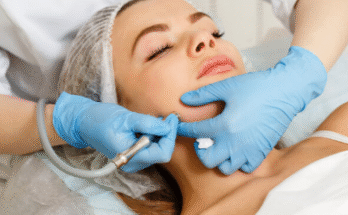Acne is something most people experience at some point, whether during the teenage years or later in life. While it can feel frustrating, the good news is that science has given us effective tools to help clear and calm the skin. Many of these tools come in the form of ingredients that have been studied for their ability to reduce breakouts, soothe inflammation, and improve overall skin health. Understanding how these ingredients work can make it much easier to choose the right products and set realistic expectations.
One of the most well-known acne-fighting ingredients is salicylic acid. This is a type of beta hydroxy acid, or BHA, which works by gently exfoliating inside the pores. When pores become clogged with oil and dead skin cells, blackheads and whiteheads can appear. Salicylic acid helps to break down this buildup and keep pores clear, which is why it is so common in cleansers, toners, and spot treatments. For many people with mild to moderate acne, regular use of salicylic acid can make a noticeable difference in reducing breakouts and smoothing skin texture.
Another powerhouse ingredient is benzoyl peroxide. Unlike salicylic acid, which focuses on unclogging pores, benzoyl peroxide primarily works by targeting the bacteria that contribute to acne formation. This bacteria, when trapped in pores, triggers inflammation and leads to those red, sometimes painful blemishes. Benzoyl peroxide helps to reduce the bacterial load on the skin, making it a reliable choice for inflamed breakouts. It is available in different strengths, often ranging from 2.5% to 10%. People with sensitive skin often start with lower concentrations to minimize dryness or irritation.
For those who prefer gentler options, sulfur is another ingredient worth noting. It has been used for centuries as a treatment for skin concerns. Sulfur absorbs excess oil, has mild antibacterial properties, and helps to dry out surface blemishes. While the scent of sulfur can sometimes be noticeable, many modern formulations are designed to be more pleasant to use. Products containing sulfur are often found in masks and spot treatments, making them a good occasional boost for oily or acne-prone skin.
Niacinamide, also known as vitamin B3, has gained popularity in recent years as a versatile skincare ingredient. While it is not as strong as salicylic acid or benzoyl peroxide in directly treating acne, it offers a complementary approach. Niacinamide helps reduce redness, regulates oil production, and strengthens the skin’s barrier. This means it can make the skin less reactive and more resilient, which is especially helpful for people dealing with both breakouts and sensitivity. Another bonus is that niacinamide supports even skin tone, helping to fade the marks left behind by old blemishes.
Alpha hydroxy acids, or AHAs, such as glycolic acid and lactic acid, also play an important role. These acids work on the surface of the skin by dissolving the bonds that hold dead cells together. When dead cells are cleared away, the skin looks brighter and feels smoother. By keeping the surface fresh and free of buildup, AHAs reduce the likelihood of clogged pores and can improve the appearance of acne scars over time. They are also commonly used in chemical peels, but lower concentrations can be found in over-the-counter products for at-home care.
Tea tree oil is another option that appeals to those who prefer natural remedies. Research suggests that tea tree oil has antimicrobial and anti-inflammatory properties, making it useful for mild breakouts. However, because it is an essential oil, it should be used with care and often diluted to avoid irritation. Many skincare brands now include tea tree oil in cleansers, gels, or creams designed specifically for acne-prone skin.
Choosing the right ingredient often depends on the type of acne and the individual’s skin type. Some people benefit from a combination approach, such as using salicylic acid to keep pores clear and niacinamide to calm redness. Others may find that a single hero ingredient is enough to maintain balance. It is important to start slowly, give products time to work, and pay attention to how the skin responds.
In the end, acne care is not about quick fixes but about finding consistent, gentle solutions that support long-term skin health. With so many effective ingredients available today, everyone has the opportunity to build a routine that helps them feel more confident in their skin.

